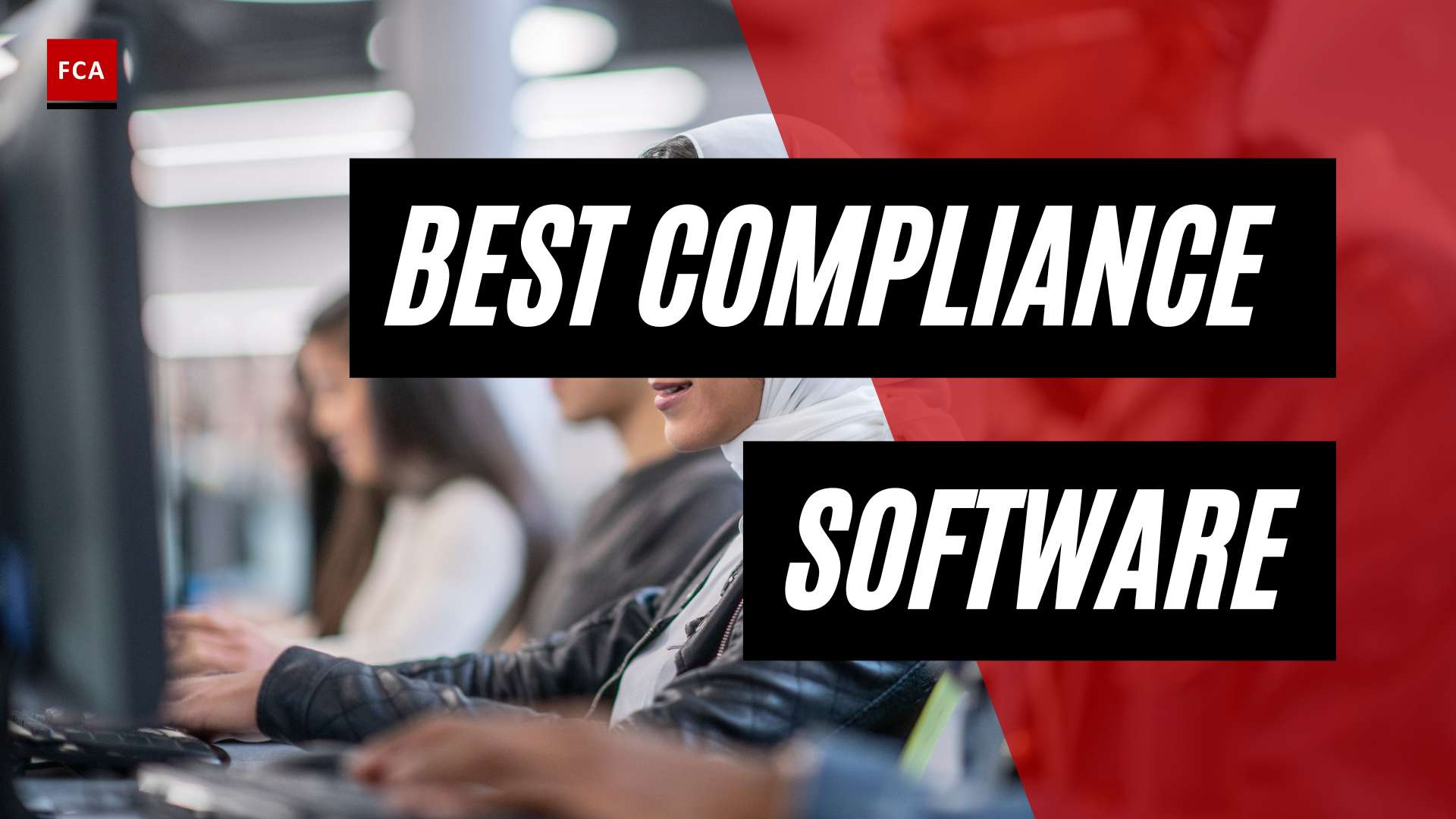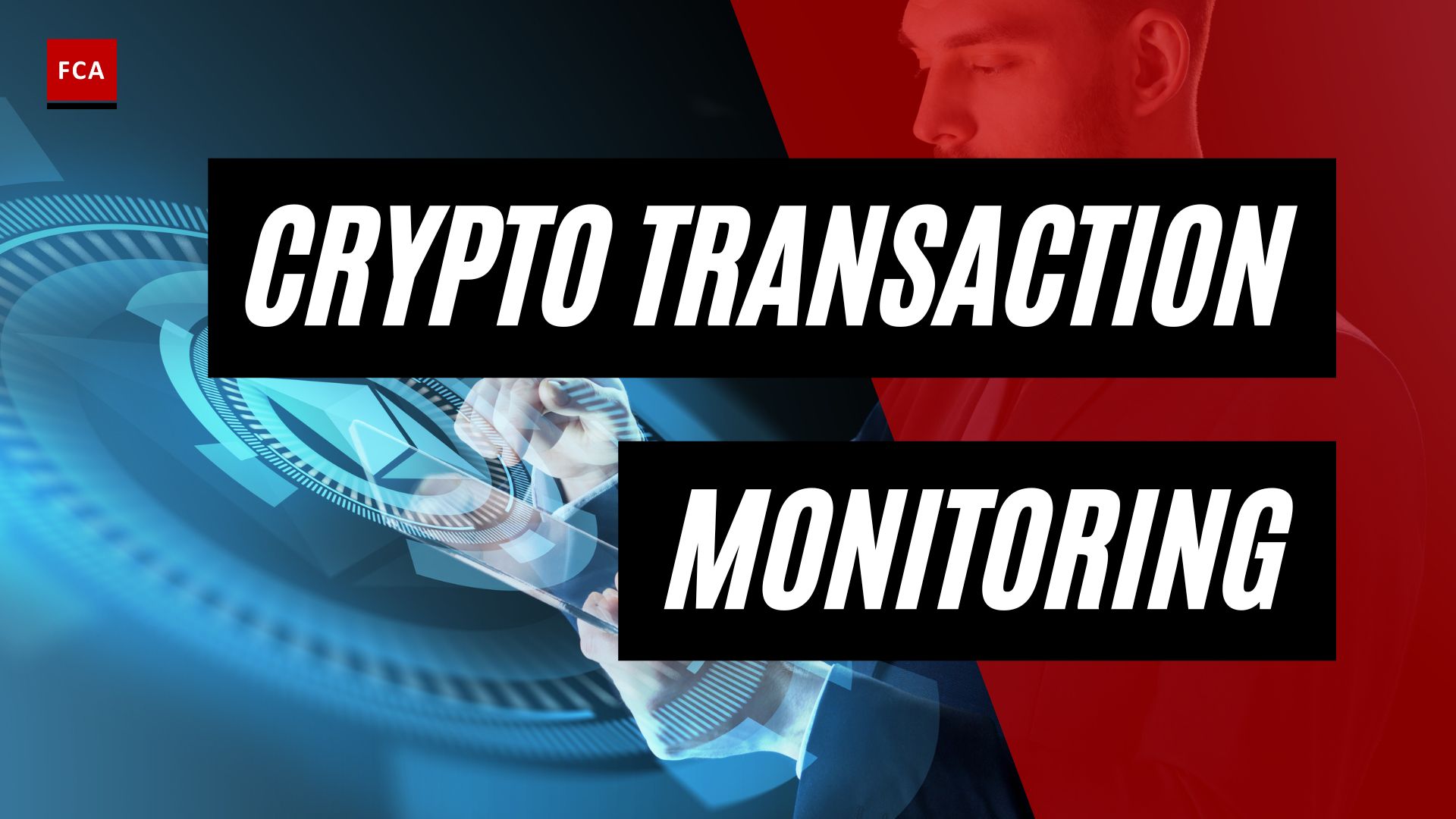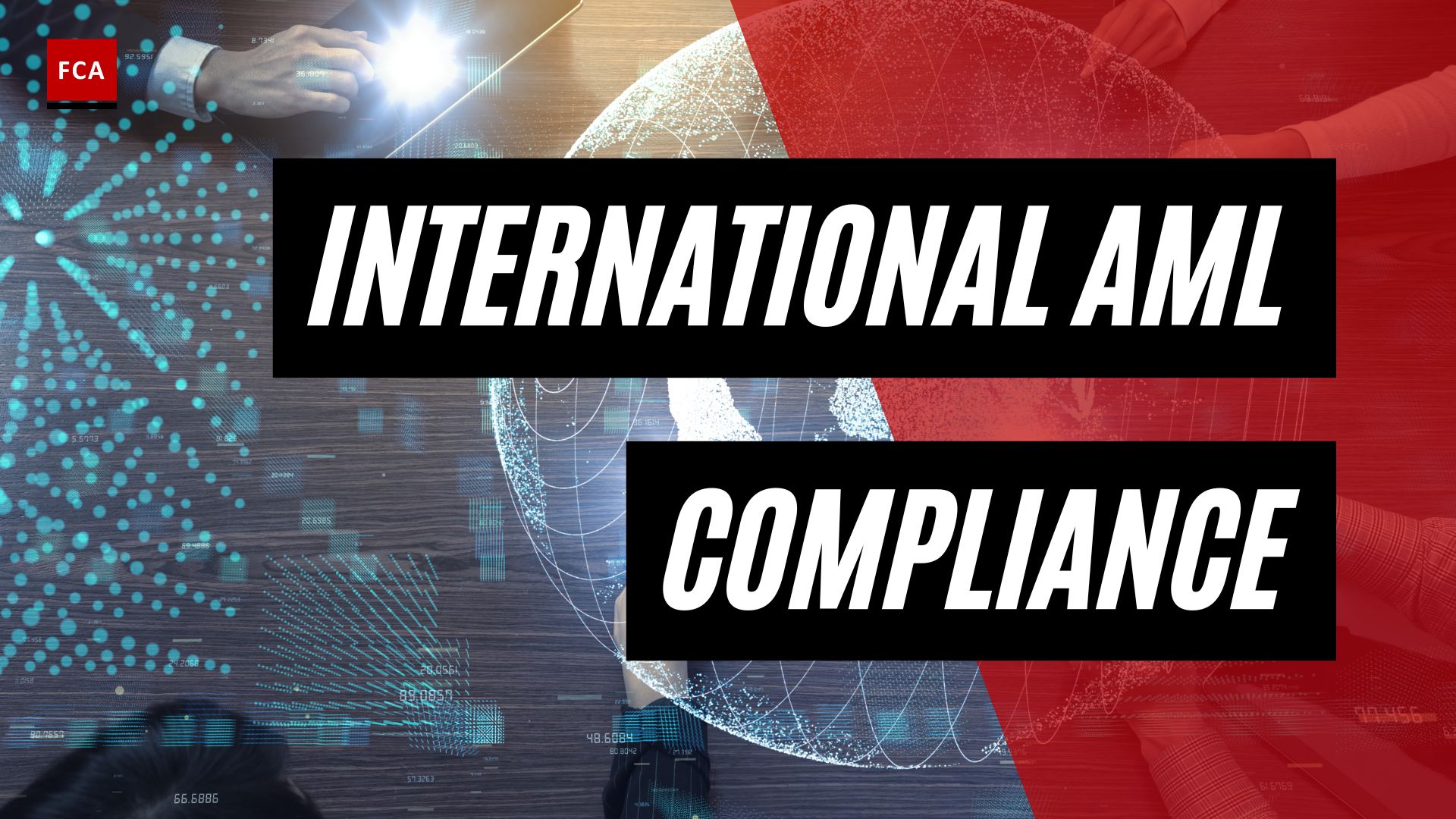The Role of Technology in AML Careers
In the ever-evolving field of anti-money laundering (AML), technology plays a crucial role in enhancing the effectiveness and efficiency of AML professionals. The adoption of technology tools has become increasingly important to keep up with the complexities of financial crimes and regulatory requirements. This section will explore the importance of technology tools for AML professionals and highlight the trends in technology adoption for AML compliance.
Importance of Technology Tools for AML Professionals
With the growing volume and complexity of financial transactions, AML professionals must utilize technology tools to effectively detect and prevent money laundering and other financial crimes.
Technology tools provide AML professionals with numerous benefits, including:
- Real-time monitoring capabilities: Technology tools enable AML professionals to monitor financial transactions in real-time, allowing for faster responses to suspicious activities and enhancing overall risk management strategies in financial institutions.
- Automation and machine learning: Integration of machine learning and artificial intelligence (AI) into AML technology tools automates certain tasks, improves accuracy in identifying potential risks, and reduces the burden on AML teams.
- Advanced analytics for deeper insights: AML technology solutions incorporate advanced analytics, enabling professionals to gain deeper insights into complex financial transactions, identify patterns of illicit behavior, and strengthen overall compliance efforts within organizations.
- Strengthening the fight against financial crimes: By harnessing the power of technology, AML professionals can enhance their ability to detect, investigate, and prevent money laundering and other financial crimes.
To stay competitive and effectively combat financial crimes, AML professionals must embrace technology tools and leverage them to their advantage.
Trends in Technology Adoption for AML Compliance
The adoption of technology tools in the AML industry is driven by the need to adapt to new challenges and regulatory requirements. Several trends have emerged in recent years, shaping the landscape of technology adoption for AML compliance.
- AI and ML technologies: In 2024, 72% of surveyed AML professionals stated that they rely on AI and ML tools for AML compliance (Zigram). These technologies enable AML professionals to automate processes, improve detection accuracy, and handle large volumes of data efficiently.
- Advanced analytics tools: A significant number of AML professionals (58%) consider advanced analytics tools essential for AML compliance in 2024 (Zigram). These tools, such as data visualization software and predictive analytics tools, provide AML professionals with valuable insights and help identify potential risks.
- Cloud-based solutions: Cloud-based technology solutions have gained popularity among AML professionals, with 43% of respondents highlighting their benefits in streamlining AML processes and data management. Cloud-based solutions offer scalability, accessibility, and enhanced collaboration capabilities.
- Blockchain technology: Blockchain technology has gained significant traction among AML professionals, with 52% of respondents citing its importance in enhancing AML processes and ensuring compliance. Blockchain’s decentralized and immutable nature provides transparency and traceability, making it valuable for AML efforts.
By embracing these technology trends and leveraging the right tools, AML professionals can enhance their capabilities in detecting and preventing financial crimes. However, it is important to navigate the challenges associated with technology adoption, such as data privacy and cybersecurity, ethical considerations, and ensuring effectiveness and accountability.
In the next sections, we will explore the specific technology tools that are crucial for AML professionals, the benefits and challenges of technology adoption, as well as leading technology providers in the AML industry.
Key Technology Tools for AML Professionals
In the ever-evolving landscape of anti-money laundering (AML) compliance, technology plays a crucial role in empowering AML professionals to effectively detect and prevent financial crimes. Several key technology tools have emerged as essential resources in the field. These tools include AI and ML technologies, advanced analytics tools, cloud-based solutions, and blockchain technology.
AI and ML Technologies
In 2024, AI and ML technologies have become particularly vital for AML professionals, with 72% of surveyed professionals relying on these tools for AML compliance. AI and ML technologies enable AML professionals to automate tasks, improve accuracy in identifying potential risks, and reduce the burden on AML teams. These technologies can analyze vast amounts of data, detect patterns, and identify suspicious activities that may require further investigation. By leveraging AI and ML, AML professionals can enhance their effectiveness in combating financial crimes.
Advanced Analytics Tools
Advanced analytics tools, such as data visualization software and predictive analytics tools, are considered essential by 58% of AML professionals for AML compliance in 2024 (Zigram). These tools enable professionals to gain deeper insights into complex financial transactions, identify patterns of illicit behavior, and strengthen overall compliance efforts within organizations. By harnessing the power of advanced analytics, AML professionals can make more informed decisions and mitigate risks effectively.
Cloud-Based Solutions
Cloud-based technology solutions have gained popularity among AML professionals, with 43% of respondents highlighting the benefits of these tools in streamlining AML processes and data management (Zigram). Cloud-based solutions offer scalability, flexibility, and cost-effectiveness, allowing AML professionals to access and analyze large volumes of data from anywhere at any time. These solutions enhance collaboration, facilitate real-time monitoring, and support efficient compliance workflows.
Blockchain Technology
Blockchain technology has emerged as a significant tool for AML professionals, with 52% of respondents recognizing its importance in enhancing AML processes and ensuring compliance. Blockchain provides a decentralized and immutable ledger that can securely record and verify transactions. By using blockchain technology, AML professionals can improve the transparency and traceability of financial transactions, making it more difficult for illicit activities to go undetected. Blockchain also enables secure sharing of information among different entities, fostering collaboration and strengthening the fight against financial crimes.
The adoption of these technology tools empowers AML professionals to streamline processes, manage large volumes of data, and conduct more sophisticated analyses, ultimately enhancing the effectiveness of AML efforts. As the industry becomes more complex, technology solutions are vital for adapting to new challenges and staying ahead of evolving tactics employed by financial criminals. By leveraging AI and ML technologies, advanced analytics tools, cloud-based solutions, and blockchain technology, AML professionals can strengthen their compliance strategies and contribute to the global fight against financial crimes.
Benefits and Challenges of Technology Adoption in AML
As technology continues to advance, its role in anti-money laundering (AML) careers becomes increasingly vital. Technology tools offer numerous benefits for AML professionals, enabling them to streamline processes, manage large volumes of data, and conduct more sophisticated analyses. These tools empower teams to detect and prevent financial crimes effectively.
Benefits of Technology Tools for AML Professionals
- Efficiency and Automation: Machine learning and artificial intelligence (AI) are being integrated into AML technology tools, enabling the automation of certain tasks, improving accuracy in identifying potential risks, and reducing the burden on AML teams. By automating repetitive processes, professionals can focus on higher-value tasks that require human judgment and expertise.
- Deeper Insights and Advanced Analytics: The use of advanced analytics through AML technology solutions allows professionals to gain deeper insights into complex financial transactions, identify patterns of illicit behavior, and strengthen overall compliance efforts within organizations. By leveraging these tools, AML professionals can analyze vast amounts of data more efficiently and effectively, enhancing their ability to detect suspicious activities and potential money laundering schemes.
- Enhanced Risk Management: Technology tools enable real-time monitoring and risk management, allowing AML professionals to identify and respond to potential risks promptly. With the ability to monitor transactions and activities in real-time, professionals can more effectively mitigate financial crime risks and take proactive measures to prevent money laundering and terrorist financing.
- Improved Compliance: The adoption of technology tools in AML operations can enhance compliance with regulatory requirements. These tools provide the capability to automate regulatory reporting, ensuring accurate and timely submission of suspicious activity reports and other compliance documentation.
Challenges in Implementing Technology Solutions
While the benefits of technology adoption in AML are significant, there are challenges that organizations and professionals face when implementing these solutions. Some of the key challenges include:
- Data Privacy and Cybersecurity: The use of technology tools involves the handling of sensitive and confidential data. Ensuring data privacy and maintaining robust cybersecurity measures are critical to safeguard sensitive information from unauthorized access and potential breaches. Organizations must prioritize data protection and implement appropriate controls to address these concerns.
- Ethical Considerations: As technology tools continue to evolve, ethical considerations related to data usage, algorithm biases, and privacy implications arise. AML professionals must navigate these ethical considerations and ensure that the use of technology aligns with ethical standards and regulatory requirements.
- Ensuring Effectiveness and Accountability: Adopting technology tools requires careful implementation and ongoing monitoring to ensure their effectiveness in detecting and preventing financial crimes. It is essential to establish clear metrics and accountability frameworks to assess the performance of technology solutions and identify areas for improvement.
By addressing these challenges and leveraging the benefits of technology tools, AML professionals can enhance their efforts in combating money laundering, terrorist financing, and other financial crimes. The integration of technology into AML operations presents opportunities for more efficient and effective risk management, improved compliance, and stronger overall anti-financial crime measures.
Leading Technology Providers in AML
In the ever-evolving landscape of anti-money laundering (AML), technology plays a vital role in empowering AML professionals to effectively combat financial crimes. Several leading technology providers offer innovative solutions that assist organizations in their AML efforts. Let’s explore some of these providers:
ComplyAdvantage
ComplyAdvantage is a prominent player in the AML technology space. Their AI-driven fraud and AML risk detection solution have gained recognition for their ability to reduce false positives by up to 70% and shorten onboarding cycle times by up to 50%. By leveraging advanced technologies, ComplyAdvantage enables banks and financial institutions to enhance their compliance workloads with increased efficiency.
LexisNexis Risk Solutions
LexisNexis Risk Solutions is a globally recognized provider of legal, regulatory, and business information and analytics. Serving seven of the top ten banks worldwide, LexisNexis Risk Solutions offers comprehensive solutions that support AML compliance efforts (ComplyAdvantage). With their extensive data and analytics capabilities, they help organizations navigate regulatory challenges and mitigate financial risks effectively.
LSEG Data and Analytics
Formerly known as Refinitiv, LSEG Data and Analytics is a leading financial markets infrastructure provider. They offer a wide range of financial data, analytics, and news to support AML compliance efforts. Their solutions cater to organizations like Deutsche Bank and JPMorgan Chase, providing them with the necessary tools to navigate the complex landscape of AML regulations and requirements.
Dow Jones Risk and Compliance
Dow Jones Risk and Compliance is another prominent technology provider offering risk management data and integrated solutions to manage regulatory and reputational risks. Their comprehensive suite of tools assists organizations in their AML efforts. With customers including Hobson Prior and ICBC, Dow Jones Risk and Compliance enables businesses to stay ahead of potential financial crimes (ComplyAdvantage).
Oracle
Oracle is widely known for its integrated cloud application and platform services. They offer a range of AML features that cater to clients such as Credit Agricole and Aman Bank. By leveraging Oracle’s technology solutions, organizations can enhance their AML capabilities and streamline their compliance processes (ComplyAdvantage).
These leading technology providers in the AML space offer a diverse range of solutions to support organizations in their fight against financial crimes. By leveraging the tools and capabilities provided by these providers, AML professionals can enhance their effectiveness in identifying and mitigating AML risks. It is important for organizations to evaluate their specific requirements and choose the technology provider that aligns best with their needs.
Challenges Faced by AML Professionals
AML professionals encounter various challenges in their role, particularly in the ever-evolving landscape of anti-money laundering. These challenges include staying up-to-date with regulations, balancing compliance with business needs, dealing with evolving tactics of financial criminals, and understanding the consequences of non-compliance.
Staying Up-to-Date with Regulations
Staying knowledgeable about regulations is crucial for AML professionals as regulations constantly change and evolve. Failure to stay compliant can result in significant penalties and reputational damage. AML professionals must keep track of local and international regulations, industry best practices, and emerging technologies to ensure compliance and protect against financial crime. This requires continuous learning, attending industry conferences, participating in AML technology training programs, and obtaining relevant AML technology certifications. By staying up-to-date, AML professionals can effectively navigate the complex regulatory environment and contribute to the success of their organizations in preventing money laundering and financial crimes.
Balancing Compliance with Business Needs
Another challenge faced by AML professionals is striking a balance between compliance and business needs. While it is essential to ensure organizations comply with laws and regulations, it is equally important not to unduly impact business operations. AML professionals must work closely with business leaders and other stakeholders to understand the organization’s risk appetite, strategic objectives, and operational requirements. By collaborating and leveraging technology and automation, AML professionals can integrate compliance efforts effectively into the organization’s overall strategy. This approach allows for a streamlined compliance process that minimizes disruption to business operations while still effectively combating money laundering and illicit financial activities.
Evolving Tactics of Financial Criminals
Financial criminals continually adapt their tactics to evade detection and exploit vulnerabilities in the system. They increasingly utilize technologies like cryptocurrencies and digital payment methods to conceal their illicit activities. AML professionals face significant challenges in detecting and preventing money laundering due to the difficulty in tracing these transactions effectively. To combat the evolving tactics of financial criminals, AML professionals must stay updated with the latest trends and adjust their strategies accordingly. This involves leveraging advanced technologies, such as AI and machine learning, to analyze vast amounts of data and identify suspicious patterns. By adopting innovative tools and analytics, AML professionals can enhance their capabilities to detect and prevent financial crimes effectively.
Consequences of Non-Compliance
Non-compliance with AML regulations can have severe consequences for organizations and individuals alike. The financial penalties for non-compliance can range from thousands to millions of dollars, depending on the severity of the violation. Additionally, non-compliance can lead to reputational damage, decreased trust among stakeholders, and negative impacts on employee morale. AML professionals play a critical role in ensuring compliance, implementing robust internal controls, and conducting thorough risk assessments. By prioritizing compliance and fostering a culture of ethics and integrity, organizations can mitigate the risks associated with non-compliance and maintain their reputation as responsible and trustworthy entities.
In the face of these challenges, AML professionals must leverage technology tools and advancements to enhance their efforts in combating money laundering and financial crimes. The next section will explore the benefits of using technology tools in AML operations and how they can strengthen the fight against illicit activities.
Enhancing AML Efforts with Technology
To effectively combat money laundering and financial crimes, AML professionals are increasingly embracing technology tools that enhance their efforts. These tools provide real-time monitoring and risk management capabilities, leverage automation and machine learning, utilize advanced analytics, and strengthen the fight against financial crimes. Let’s explore each of these areas in detail.
Real-Time Monitoring and Risk Management
Technology tools offer AML professionals the ability to monitor financial transactions in real time, enabling faster responses to suspicious activities and enhancing overall risk management strategies in financial institutions. Real-time monitoring allows for the timely detection of potential money laundering activities, enabling swift actions to mitigate risks and protect organizations from financial and reputational damage.
Automation and Machine Learning
Automation and machine learning have become integral to AML technology tools. These technologies enable the automation of certain tasks, improving accuracy in identifying potential risks, and reducing the burden on AML teams. Machine learning algorithms can analyze large volumes of data, identify patterns, and generate alerts for potentially suspicious activities. By automating repetitive tasks, AML professionals can focus their efforts on more complex investigations and strategic decision-making.
Advanced Analytics for Deeper Insights
Advanced analytics plays a crucial role in strengthening AML efforts. By leveraging technology tools, AML professionals can gain deeper insights into complex financial transactions and identify patterns of illicit behavior. Advanced analytics tools use various data analysis techniques, including data mining and predictive modeling, to detect anomalies and uncover potential money laundering schemes. These insights enable AML professionals to take proactive measures to prevent financial crimes and strengthen overall compliance efforts within organizations (Financial Crime Academy).
Strengthening the Fight Against Financial Crimes
Technology tools play a pivotal role in strengthening the fight against financial crimes such as money laundering, drug trafficking, and tax evasion. They provide essential tools and intelligence technologies for detection, enabling AML professionals to stay ahead of evolving criminal tactics. By leveraging innovative technologies, such as AI and machine learning, organizations can enhance their ability to identify and prevent illicit activities. This proactive approach strengthens compliance measures and helps protect the integrity of the financial system (Sanction Scanner).
By embracing technology tools that offer real-time monitoring, automation, advanced analytics, and intelligence capabilities, AML professionals can significantly enhance their efforts in combating money laundering and financial crimes. These tools empower professionals to detect suspicious activities, manage risks effectively, and stay ahead of evolving threats in the ever-changing landscape of financial crime.
AML Technology Trends and Opportunities
As the landscape of anti-money laundering (AML) evolves, the role of technology becomes increasingly vital in the fight against financial crimes. AML professionals can leverage various technology tools to enhance their efforts in detecting, monitoring, and preventing illicit activities. In this section, we will explore some of the key technology trends and opportunities in the AML field.
The Role of AI and Machine Learning
Artificial intelligence (AI) and machine learning (ML) technologies are transforming the AML landscape. These technologies have the potential to automate certain tasks, improve accuracy in identifying potential risks, and reduce the burden on AML teams (Financial Crime Academy). With AI and ML, AML professionals can analyze vast amounts of data, detect patterns, and identify suspicious transactions more efficiently.
AI and ML technologies also enable real-time monitoring, allowing for faster responses to suspicious activities and enhancing overall risk management strategies in financial institutions. By continuously learning from data, AI and ML can adapt and improve their detection capabilities over time, keeping up with the evolving tactics of financial criminals.
Robotics Process Automation and Data Analytics
Another significant technology trend in AML is the use of robotics process automation (RPA) and data analytics. Advanced analytics through AML technology solutions provide professionals with deeper insights into complex financial transactions, helping identify patterns of illicit behavior and strengthen overall compliance efforts within organizations. By leveraging data analytics, AML professionals can gain a better understanding of risks and make more informed decisions.
RPA, on the other hand, streamlines and automates repetitive tasks, reducing manual effort and human error. This technology enables AML professionals to focus on more complex and strategic activities, such as investigating suspicious transactions and developing risk mitigation strategies.
Distributed Ledger Technology
Distributed ledger technology, commonly known as blockchain, is gaining traction in the AML landscape. Blockchain technology offers enhanced transparency, security, and immutability, making it well-suited for AML purposes. By leveraging blockchain, AML professionals can create a shared and immutable record of transactions, facilitating better traceability and reducing the risk of tampering or fraud.
Blockchain technology also enables secure and efficient information sharing among financial institutions, strengthening collaboration in combating financial crimes. The decentralized nature of blockchain enhances data integrity and can help reduce duplication and reconciliation efforts.
Enhancing Risk Assessments and Customer Due Diligence
Technology tools play a crucial role in enhancing risk assessments and customer due diligence processes within AML. These tools enable AML professionals to analyze vast amounts of data from various sources, including structured and unstructured data, to identify potential risks more effectively. By harnessing alternative data sources and utilizing advanced analytics, AML professionals can gain deeper insights into customer behavior, detect suspicious patterns, and strengthen their risk assessment strategies.
Moreover, technology solutions offer automation capabilities, allowing for more efficient and streamlined customer due diligence processes. From identity verification to ongoing monitoring, technology tools can expedite the verification process while ensuring compliance with regulatory requirements.
By embracing these technology trends and opportunities, AML professionals can enhance their overall effectiveness in combating financial crimes. However, it is important to consider the challenges and considerations in technology adoption, such as data privacy, cybersecurity, ethical concerns, and ensuring the effectiveness and accountability of these tools. With the right balance of technology and expertise, AML professionals can stay ahead in the ever-evolving landscape of financial crime prevention.
Considerations and Challenges in Technology Adoption
As AML professionals embrace technology tools to enhance their operations, it is important to consider certain factors and be aware of the challenges that come with technology adoption in the field of anti-money laundering. These considerations and challenges include data privacy and cybersecurity, ethical considerations, and ensuring effectiveness and accountability.
Data Privacy and Cybersecurity
When implementing technology solutions in AML operations, data privacy and cybersecurity should be of utmost concern. AML professionals deal with sensitive financial information, and ensuring the confidentiality, integrity, and availability of this data is crucial.
To safeguard against data breaches and unauthorized access, organizations should implement robust cybersecurity measures. This includes encryption techniques, secure data storage, and access controls. Regular audits and assessments should be conducted to identify and address any vulnerabilities in the system. Additionally, compliance with data privacy regulations, such as the General Data Protection Regulation (GDPR), is vital to protect individual privacy rights.
Ethical Considerations
Technology tools in AML operations raise ethical considerations that need to be carefully addressed. AML professionals must ensure that their use of technology aligns with legal and ethical standards. This includes respecting individuals’ privacy rights, avoiding discriminatory practices, and ensuring transparency in the use of algorithms and automated decision-making processes.
Organizations should establish clear guidelines and ethical frameworks for the use of technology tools. Regular training and awareness programs can help AML professionals navigate ethical dilemmas and make informed decisions when using technology in their work.
Ensuring Effectiveness and Accountability
While technology tools offer significant benefits in enhancing AML efforts, it is crucial to ensure their effectiveness and accountability. AML professionals need to monitor and evaluate the performance of technology solutions to ensure they meet the desired objectives and comply with regulatory requirements.
Organizations should establish robust governance frameworks to oversee the implementation and use of technology tools. This includes defining clear roles and responsibilities, establishing performance metrics, and conducting regular assessments. AML professionals should be accountable for the outcomes of technology-enabled processes and should continuously strive to improve the effectiveness of these tools.
By considering data privacy and cybersecurity, ethical considerations, and ensuring effectiveness and accountability, AML professionals can navigate the challenges associated with technology adoption. Embracing technology in a responsible and ethical manner can help enhance the efficiency and effectiveness of AML operations, ultimately contributing to the fight against financial crimes.









